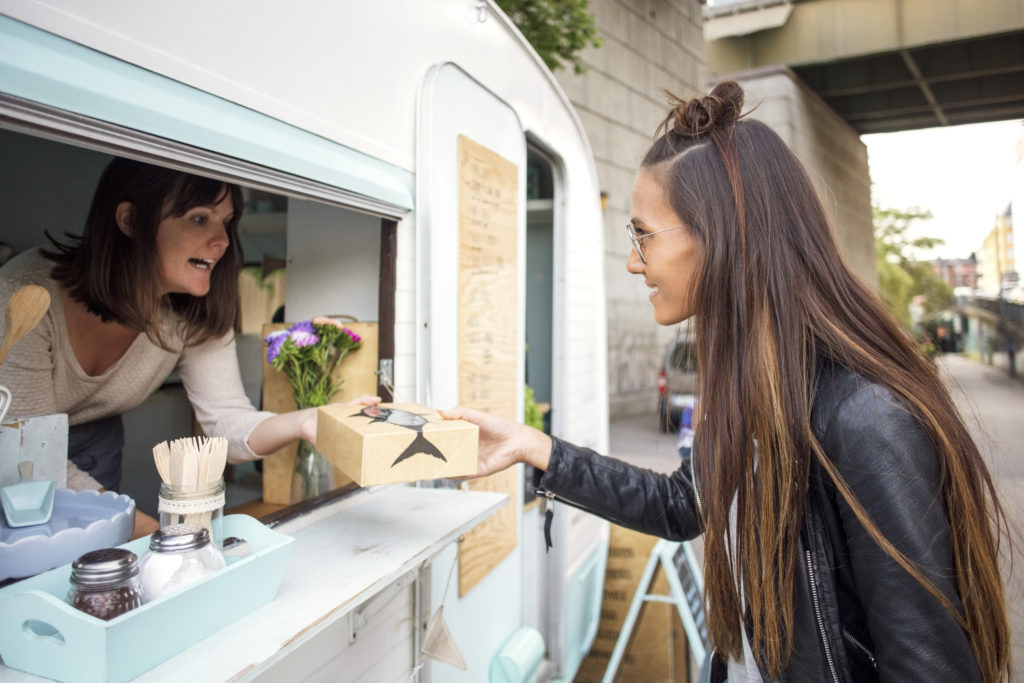In an ultra-convenient, hyper-competitive world, customers have more choice than ever. They can find similar products or services at the click of a button — often for a lower price or faster turnaround. So what makes them come back to you instead of a competitor?
Customer loyalty isn’t automatic. It’s earned through every interaction — from quick online checkouts to detailed conversations in-store. The way your business shows up across different channels plays a huge role in shaping loyalty.
A seamless checkout process, helpful service, follow-ups or even a thank-you note can all make a difference. What loyalty looks like will vary depending on what you sell and how you sell it — but it always comes down to trust, consistency, and delivering value.
Here are our top loyalty and retention tips for small business owners:

Give rewards with a customer loyalty program.
Loyalty programs remain one of the most effective ways to build repeat business. In fact, most consumers say a great loyalty program makes them more likely to stick with a brand — and more likely to recommend it.
The key is finding the right fit for your existing customers. Would they appreciate discounts? Freebies after a certain number of visits? Exclusive access or upgrades?
Loyal customers spend more over time, and they’re more likely to choose you again even when there’s competition on price or convenience.
Whatever you offer, the program should feel valuable, easy to understand and genuinely rewarding. It should also align with your typical customer’s habits and preferences.
Use CRM tools to stay connected.
Customer relationship management (CRM) is essential to build a customer loyalty strategy — especially for small businesses that thrive on local trust and repeat customers.
A good CRM system helps you:
- Track customer details, preferences and purchase history
- Personalise communications and offers
- Follow up consistently after purchases or interactions.
The more engaged your customers are, the more they contribute to your overall customer lifetime value — making loyalty an investment, not a nice-to-have.
You don’t need a massive setup to make it work. Tools like Thryv can help streamline communication, automate reminders and create more meaningful touch-points — without taking up your whole day. Start your free demo today.
RELATED: What is a CRM system and how can you use it?
Communicate your business mission and values.
Customers are more likely to support businesses they connect with. A clear mission and authentic set of values can help people understand who you are and why you do what you do.
Whether it’s sustainability, quality craftsmanship or community support — share what drives you. Use your website, social media and in-store experience to reflect your values consistently.
When your values align with your customers’, you create stronger emotional connections — and greater brand loyalty as a result. People are loyal to people — not just products.
Make customer feedback count.
Even the best businesses receive negative feedback sometimes. What matters is how you handle it.
Encourage feedback at every stage of the customer journey, and show that you take it seriously. Make improvements where needed, respond openly and use criticism to fine-tune your offering.
When customers feel heard, they’re more likely to stick with you, even if things weren’t perfect the first time.
RELATED: 7 ways to maximise positive reviews of your business.
Create a consistent customer experience.
From your website to your customer service, consistency builds confidence. If someone has a great first interaction, they’ll expect the next one to be just as smooth, so focus on having satisfied customers.
Audit your digital and in-person touch-points. Is your branding consistent? Are your responses timely? Are your quotes and invoices clear and professional?
A consistent experience shows professionalism and reliability — two things that make customers more likely to come back.
RELATED: 8 benefits of offering business quotes to customers.
What are the 3 Rs of customer loyalty?
When it comes to turning first-time buyers into loyal customers, marketers often refer to the ‘3 Rs’ of customer loyalty:
- Rewards – Give your customers a reason to return, whether that’s discounts, freebies or VIP treatment
- Recognition – Show loyal customers they’re valued by personalising their experience and acknowledging their support
- Relevance – Make sure your communication, offers and values match what your customers actually want.
Mastering these three elements helps you build meaningful connections that last. This approach ensures that you not only retain customers but also cultivate the most loyal customers who become brand advocates and resist competition.
Quick loyalty checklist:
With so many brands competing for attention, building trust and repeat business is what makes customer loyalty important for small businesses today.
✅ Reward returning customers with value they care about
✅ Personalise interactions using customer data
✅ Keep service and branding consistent across all touch-points
✅ Listen to feedback and take action
✅ Share your mission and values clearly and authentically
✅ Cultivate truly loyal customers by fostering deep emotional connections and commitment.
Building loyalty doesn’t have to mean doing more — it’s about doing the right things, consistently. Start small, stay consistent and watch your regulars grow.
Measuring customer loyalty.
Measuring customer loyalty is essential for understanding how effective your loyalty strategies are and identifying areas for improvement. Several key metrics can help you gauge customer loyalty:
- Net Promoter Score (NPS): This widely used metric measures customer satisfaction and loyalty by asking, ‘How likely are you to recommend our brand to a friend or colleague?’ A high NPS indicates strong customer loyalty.
- Customer Loyalty Index (CLI): This standardised metric assesses the strength of a customer’s loyalty by asking questions about repeat purchases, multiple purchases and overall satisfaction.
- Customer Retention Rate: This metric measures the percentage of customers who continue to do business with you over time. A high retention rate signifies strong customer loyalty.
- Customer Satisfaction Score (CSAT): This metric evaluates customer satisfaction with a specific product, service, or interaction. High CSAT scores often correlate with loyal customers.
By tracking these metrics, you can gain valuable insights into your customers’ loyalty and pinpoint areas where you can improve.
RELATED: CRM implementation: What to do once your CRM database is live.
Help customers find you — and stay with you.
It’s been a long time since Yellow Pages was just a phone book. Today, we help small businesses across Australia show up where it matters.
From social ads to digital display, our advertising solutions help you attract the right customers — and give them a reason to return. Want to build loyalty that lasts? We’re here to help.
